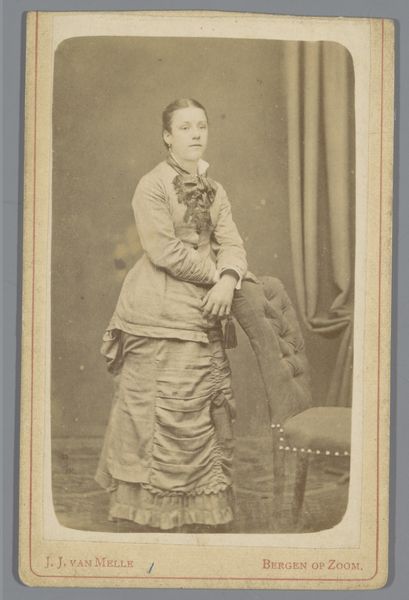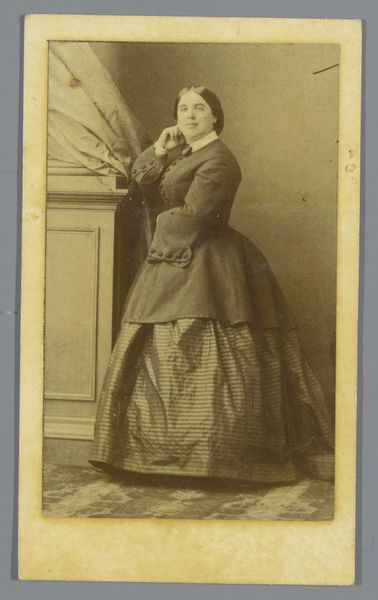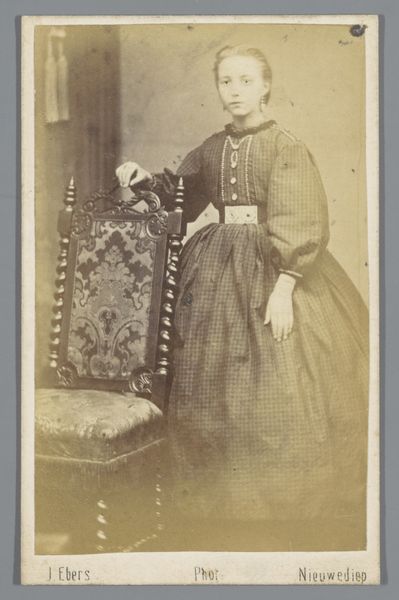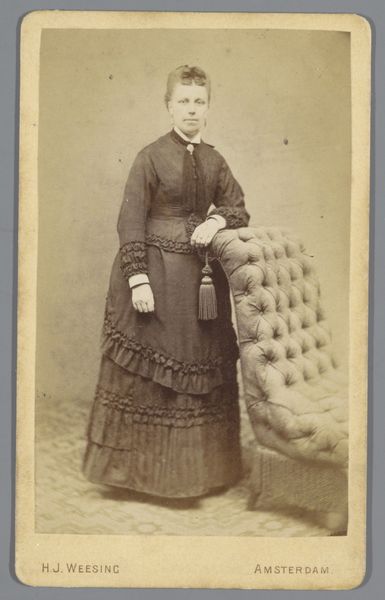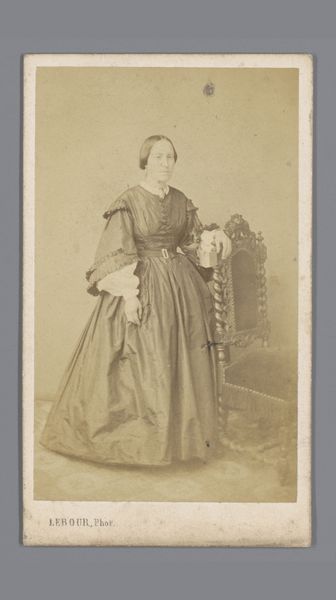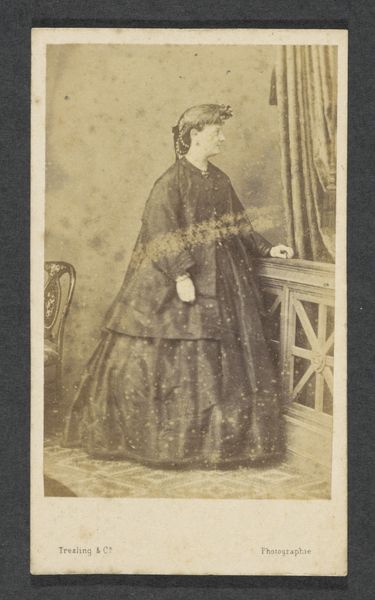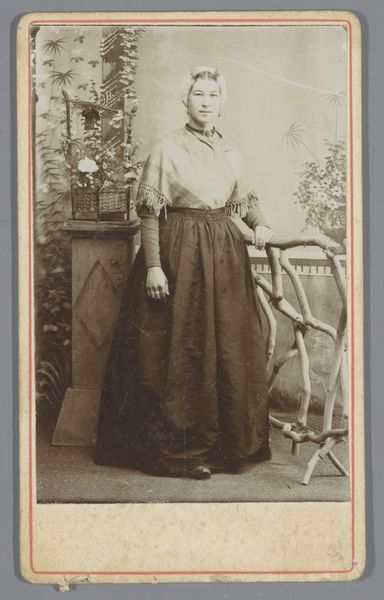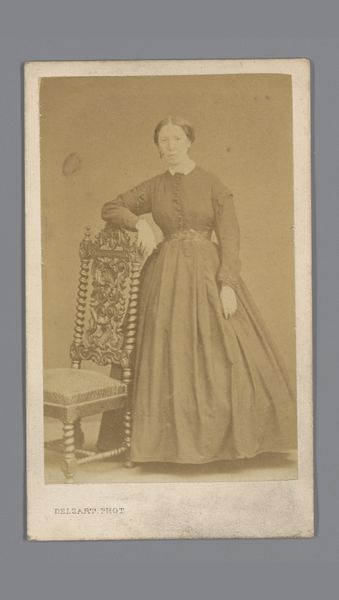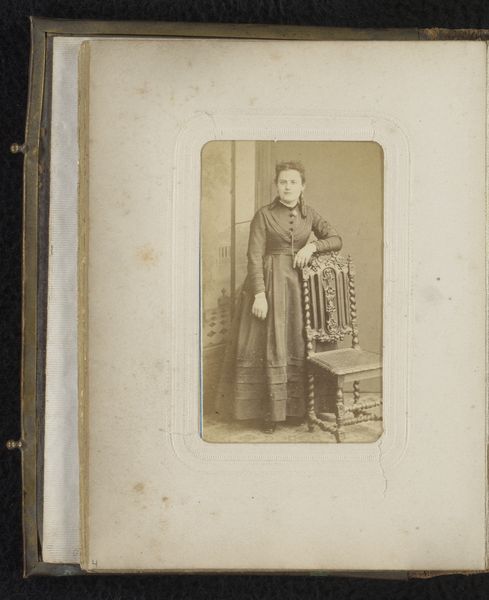
#
photo of handprinted image
#
aged paper
#
muted colour palette
#
photo restoration
#
light coloured
#
white palette
#
unrealistic statue
#
paper medium
#
cutout
#
statue
Dimensions: height 110 mm, width 65 mm
Copyright: Rijks Museum: Open Domain
Editor: We're looking at a photograph titled "Portret van een onbekende vrouw uit de familie Marmelstein," dating from sometime between 1850 and 1900. There's a striking formality to it, even a kind of melancholy. What do you see in this portrait that might reveal something about the sitter and her time? Curator: The most compelling aspect for me is the woman’s gaze. It avoids direct confrontation, suggesting a carefully constructed presentation of self. The chair, so ornate, feels like a prop, a symbol of status carefully placed within the frame. Think of what a chair represented at this time: permanence, family history, wealth...do you agree? Editor: Definitely. It seems almost performative, the way she's leaning against the chair. There's a calculatedness about the pose. Is that common in photography from this era? Curator: Absolutely. Early photography was expensive and time-consuming, therefore portraits weren't candid snaps. They were constructed narratives. Notice how the vertical stripes of her dress mirror the vertical lines of the chair. This creates a visual harmony but also perhaps hints at the restrictions and social structures that confined women of that time. Editor: That's interesting. I hadn't noticed the connection between the stripes and the chair. So, you’re saying the photograph is communicating something beyond just a likeness of this woman? Curator: Precisely. Consider the 'unknown' status, yet rooted in the 'Marmelstein' family. This gives way to questions about identity, familial connection, the constraints of social expectations, and how we remember people and project ourselves within our cultural memory. Editor: So, even without knowing her name, we can still glean insights into her world through the symbols within the image. Curator: Exactly. Each element speaks volumes, contributing to a rich tapestry of cultural meaning and societal implication. The symbols give hints as to who she was in that particular society and how she saw her position. Editor: I'll never look at an old portrait the same way again. It makes me think of what information future viewers might take away from my generation's portraits and photographs. Curator: It's all about decoding the visual language of the past. It helps us understand the present, doesn't it?
Comments
No comments
Be the first to comment and join the conversation on the ultimate creative platform.



